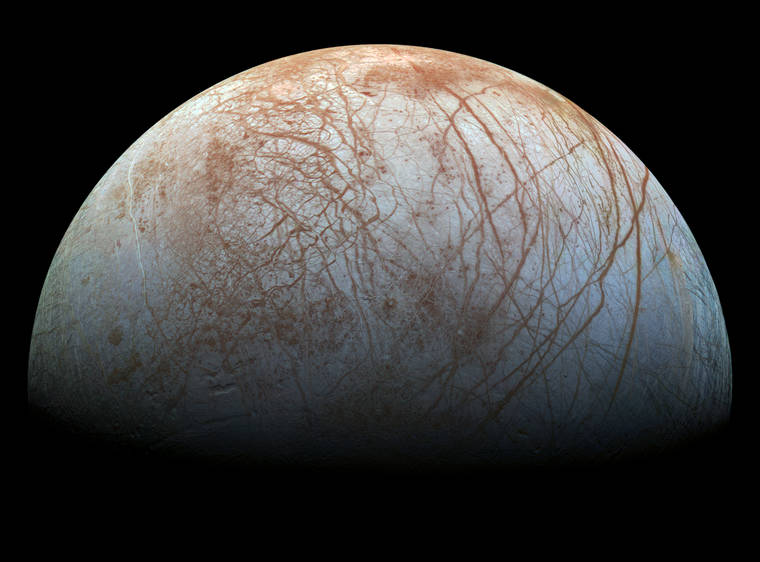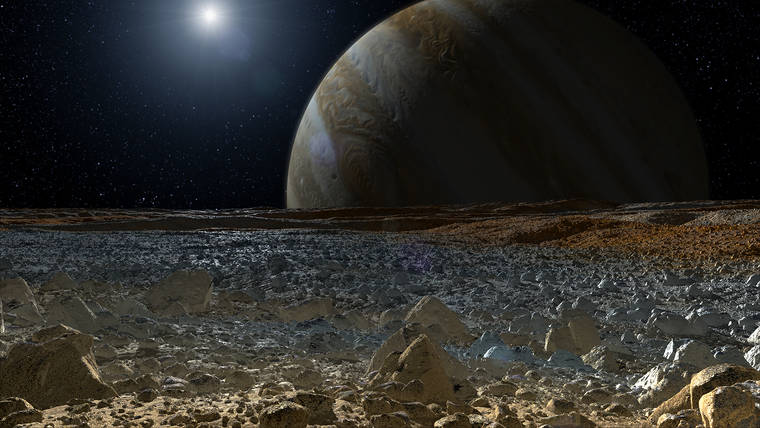Astronomers using a Big Island telescope observed what was only theorized for years: liquid water on one of Jupiter’s moons.
Europa, the sixth-largest of Jupiter’s known moons, has long been hypothesized to have an ocean of liquid water beneath its icy surface, a theory which was supported by observations by the Hubble Space Telescope in 2013.
However, thanks to a spectrograph at W. M. Keck Observatory, a team of NASA scientists, led by NASA planetary scientist Lucas Paganini, confirmed the presence of liquid water on Europa after observing a geyser discharging more than 5,200 pounds of water into the moon’s atmosphere.
“We had hypothesized about liquid water under Europa’s surface for decades,” said Keck chief scientist John O’Meara. “It’s really exciting that we have direct confirmation of one necessary conditions for life.”
The discovery of the geyser supports the theory of a liquid ocean under the ice. O’Meara said the massive tidal forces generated by Jupiter likely churn the water, keeping it liquid and causing it to occasionally burst through the ice.
The geyser on Europa is not the only known extraterrestrial liquid water in the solar system. Enceladus, a moon of Saturn, has an icy surface that also releases geysers of water, although that moon does so far more frequently than Europa appears to — only one Europan geyser was observed throughout 16 days of monitoring.
“In all likelihood, there is more water on Europa than there is on our entire planet,” O’Meara said.
With more evidence pointing to a vast ocean on Europa, the moon appears to be the most likely candidate in our solar system that could support extraterrestrial life. Liquid water is thought to be a necessity for life to form.
Around 2025, a NASA orbiter called Europa Clipper will launch on a course for Jupiter in order to study Europa more closely.
Email Michael Brestovansky at mbrestovansky@hawaiitribune-herald.com.









